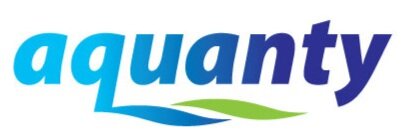Visualizing Models Components Using to Tecplot Commands
This post describes how to use Tecplot export commands to visualize model properties and structures without running a full simulation. These commands allow users to quickly inspect their model setup by generating Tecplot-formatted files directly from grok.exe. These commands are particularly useful for reviewing mesh structures, material properties, and domain features like fractures and channels before committing to a full model run. We find these tools extremely helpful for catching errors early and streamlining the model-building process.
Figure 1: Tecplot visualization of various to tecplot command outputs.
A recent request from a user resulted in the new command channels to tecplot (introduced in revision 2372, March 2022), so we thought it would be a good time to review all the similar commands that write model information to Tecplot formatted data files.
If you would like to review the commands presented here and reproduce the images below you can download the example project ‘Abdul_to_Tecplot’.
Click here to download 'Abdul_to_Tecplot' example project.
In this example we have made the following changes compared to the typical ‘Abdul’ verification problem:
Two porous medium property zones are included, with different hydraulic conductivity and porosity values
The fracture domain is included (location of fractures is arbitrary)
The channel domain is included (location of channels is arbitrary)
Evapotranspiration is active, with two ET zones.
To easily review these changes, we can use the following commands to generate Tecplot formatted output files when grok.exe is run. That means you don’t have to run the entire model through phgs.exe in order to generate and visualize the results specific to the changes above.
mesh to tecplot exports the entire 3D mesh to a Tecplot formatted ASCII file (mesh_Tecplot.dat).
K to tecplot writes elemental hydraulic conductivity information to a Tecplot formatted ASCII file (mesh_K_Tecplot.dat)
porosity to tecplot writes elemental porosity information to a Tecplot formatted ASCII file (mesh_porosity_Tecplot.dat)
ET zones to tecplot writes evapotranspiration zones to a Tecplot formatted ASCII file (mesh_ET_Tecplot.dat)
channels to tecplot writes the channel mesh to a Tecplot formatted ASCII file (mesh_channels_tecplot.dat)
fractures to tecplot writes the fracture mesh to a Tecplot formatted ASCII file (mesh_channels_tecplot.dat)
Applying the commands above is really simple, only requiring you to write the command and provide a filename (with file type *.DAT) for the Tecplot file (a portion of the ‘abdul_to_tecplot’ grok file is reproduced below):
!------------------------------------- Generate Tecplot Output mesh to tecplot mesh_Tecplot.dat K to tecplot mesh_K_Tecplot.dat porosity to tecplot mesh_Porosity_Tecplot.dat ET zones to tecplot mesh_ET_Tecplot.dat Channels to tecplot mesh_channels_tecplot.dat fractures to tecplot mesh_fractures_Tecplot.dat
You only need to run grok.exe to generate the output files which allow you to visualize the distribution of the fractures, channels and properties throughout your model domain. This is really helpful for constructing your models, since you don’t need to run through a lengthy simulation only to realize you assigned your channels/fractures to the wrong faces/segments! It’s also a very handy way of reviewing your 3D mesh before committing to a full model run.
For any users who weren’t aware that these commands existed, I really hope they make the model building experience just a little bit easier!


